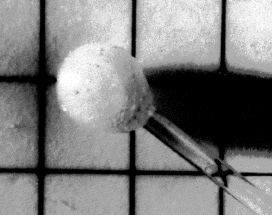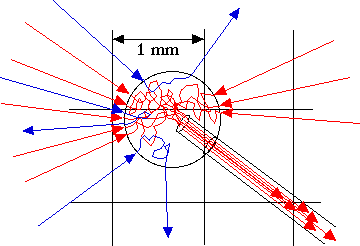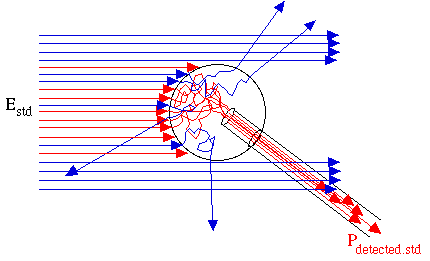
© 1998 Steven L. Jacques, Scott A. Prahl
Oregon Graduate Institute

| ECE532 Biomedical Optics © 1998 Steven L. Jacques, Scott A. Prahl Oregon Graduate Institute |
An isotropic collector will collect light from all possible directions with equal efficiency. It is useful in measuring the total integrated radiance, or fluence rate, within a region filled with randomly oriented rays of light.
The following figure is an example of an isotropic collector.

The device is a small sphere of turbid plastic (eg., Teflon®) with a small hole into which a optical fiber is inserted. This device was prepared by Willem Star and Han Marijnissen et al. (Rotterdam, Netherlands). (References: isotropic probes.)

Light impinging on the isotropic collector's surface will enter the sphere and diffuse toward the center where the optical fiber samples a restricted solid angle of the local radiance.
Red rays are eventually collected by the optical fiber for detection. Blue rays eventually escape the sphere without entering the optical fiber and consequently are not collected. The fraction f of incident light that is collected by the optical fiber for detection must be determined by a calibration procedure (next).

A uniform field of known collimated irradiance Estd [W/cm2] is projected onto the isotropic probe. The beam irradiates a hemispherical surface on the sphere. The fraction of the impinging irradiance on the sphere enters the sphere, diffuses to the optical fiber, is collected by the optical fiber and carried to a detector. The detector value is noted as Pdetected.std. Now the probe can be placed in any light field and the detected power Pdetected can be converted to the irradiance E [W/cm2] striking the sphere surface:
